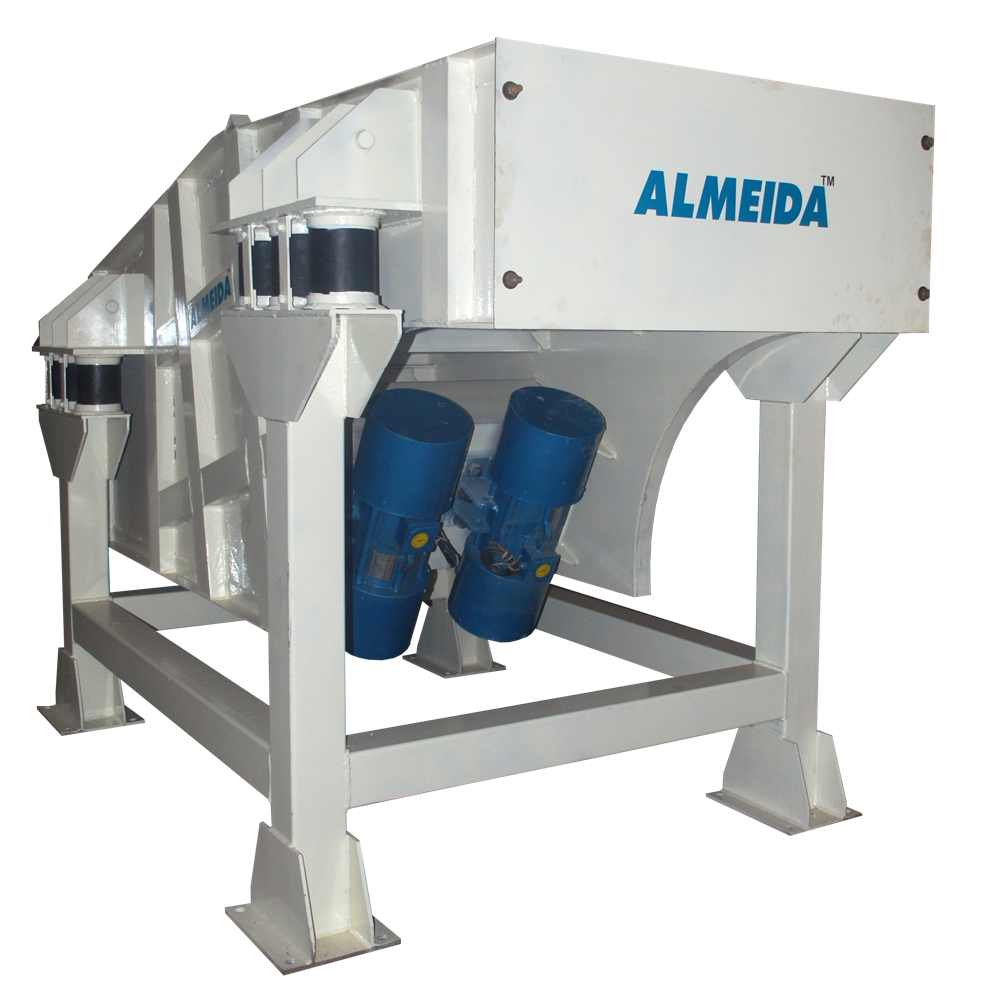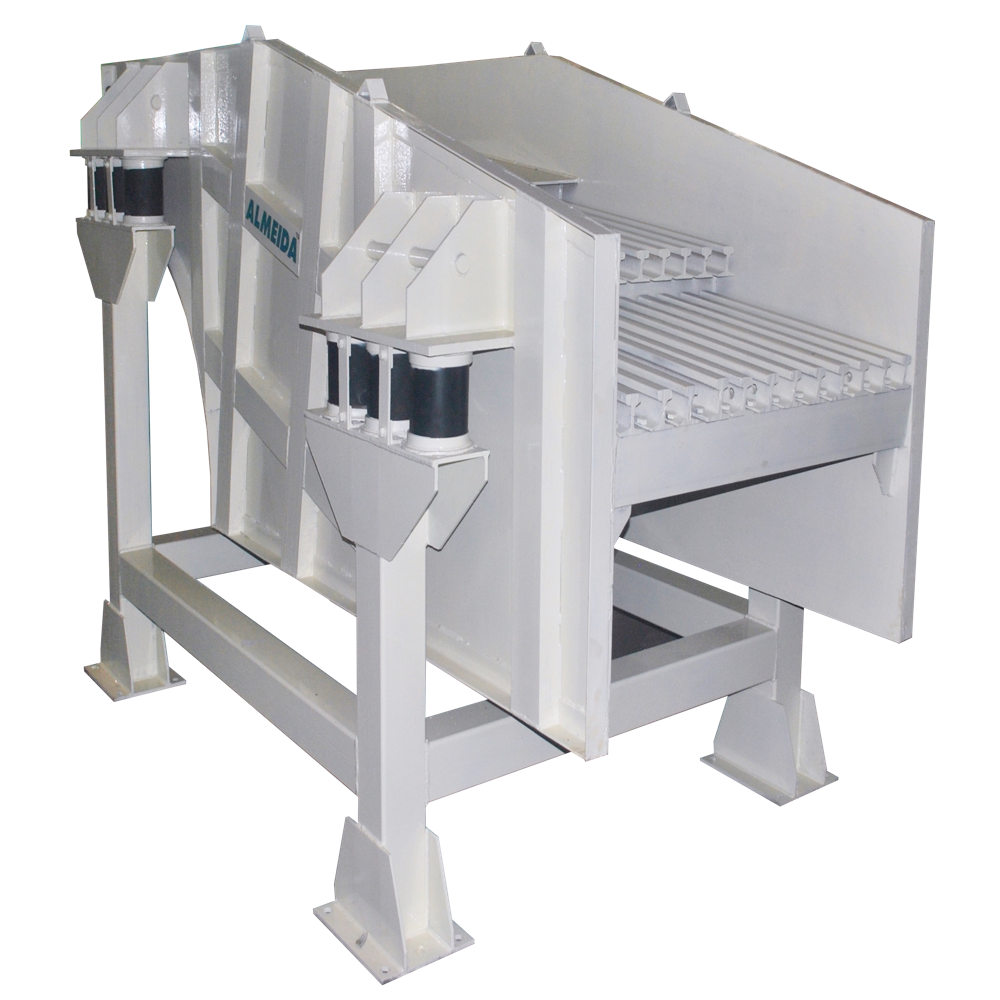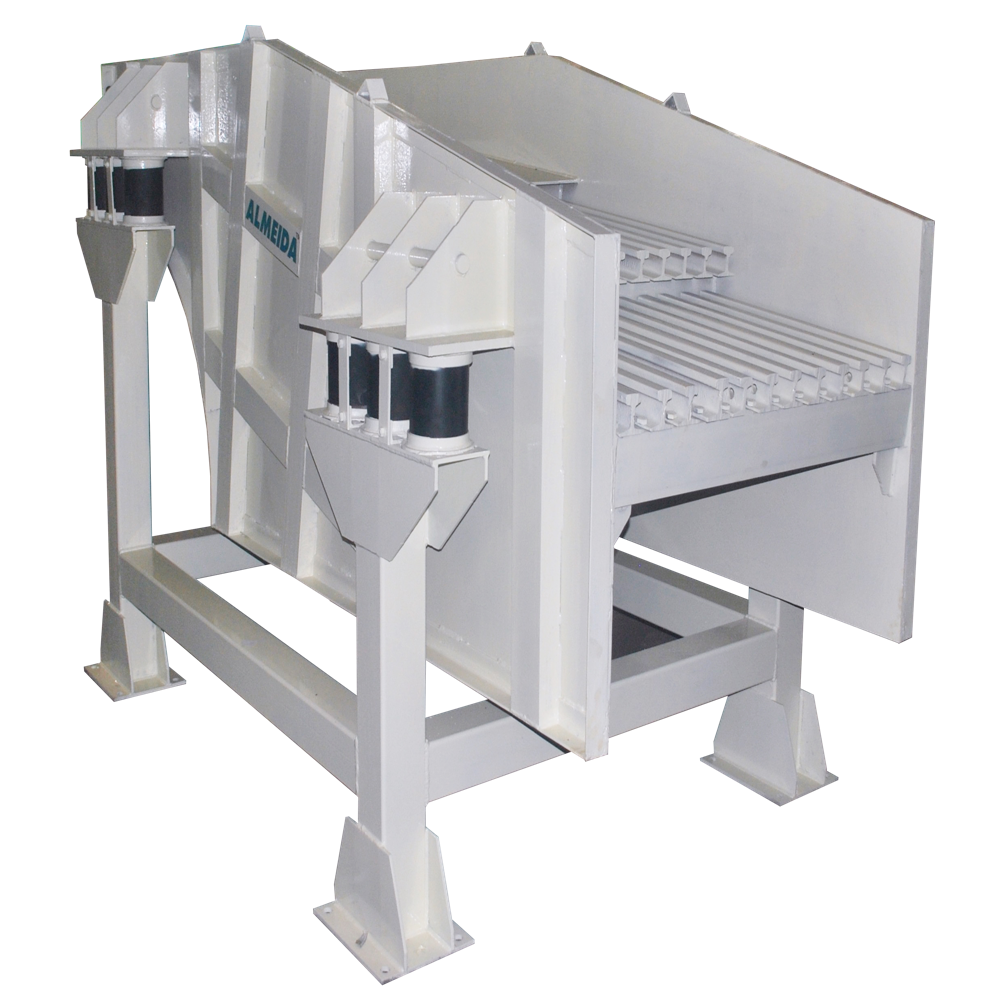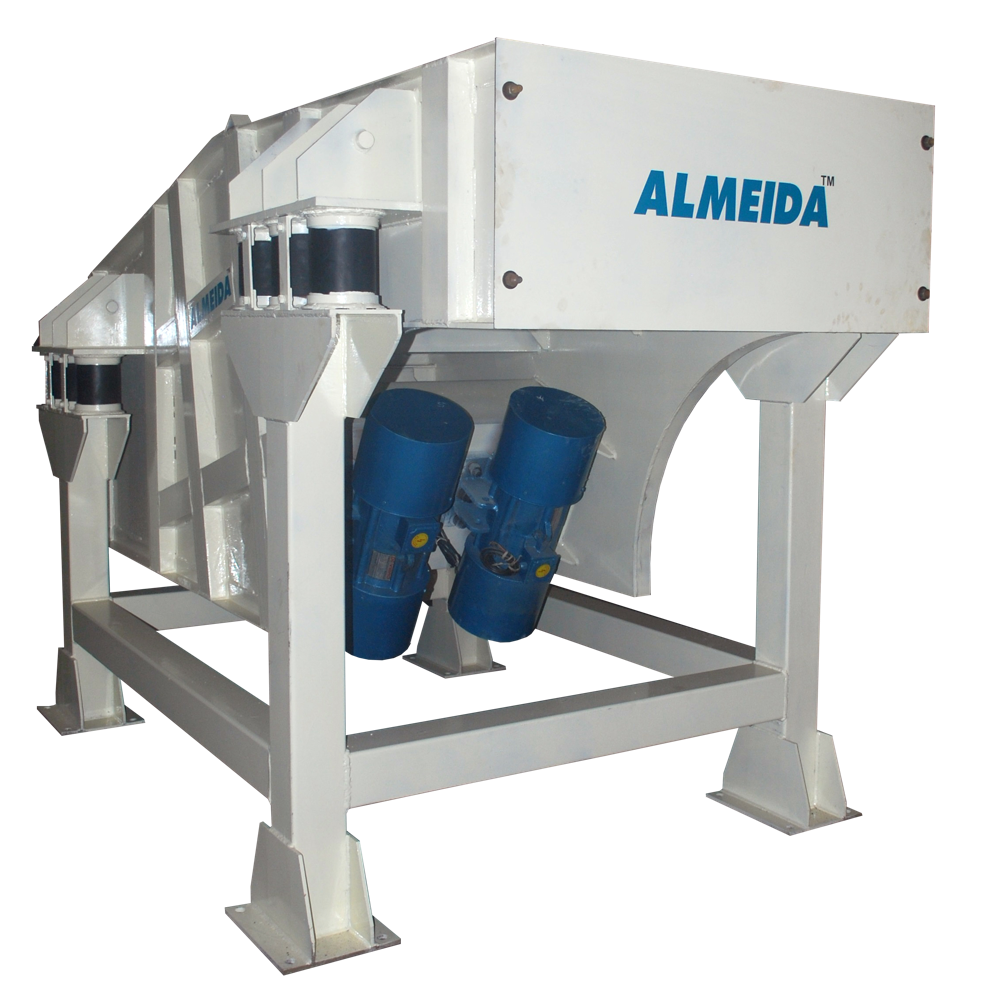Call Us08045800995

Vibrating Grizzly Feeder
Product Details:
- Type Vibrating Grizzly Feeder
- Material Mild Steel
- Computerized No
- Automatic Grade Semi-Automatic
- Warranty 12 Month
- Click to view more
X
Vibrating Grizzly Feeder Price And Quantity
- 1 Unit
Vibrating Grizzly Feeder Product Specifications
- 12 Month
- Semi-Automatic
- No
- Vibrating Grizzly Feeder
- Mild Steel
Vibrating Grizzly Feeder Trade Information
- 10 Unit Per Month
- 1-3 Week
Product Description
We are manufacturers of Vibrating Grizzly Feeder. Vibrating Grizzly Feeder is required for jaw crushers for feeding raw material automatically into hopper via vibrating mechanism. It is known to work on the principle of creating a strong linear motion so as to allow forward movement of materials. The structure of this feeder is made of high grade metal alloy with paint coated surface finish. It is said to be highly resistant to abrasion & impact and ensures efficient performance. This feeder is completely suitable for handling heavy shock loads with excellent efficiency & reliability. Vibration Grizzly Feeder offered by us is ideal to be used in mining industry and can also be availed in customizable structural configurations at competitive prices.
Applications of Vibrating Grizzly Feeder:
1. Mining and Quarrying: In mining and quarrying operations, vibrating grizzly feeders are utilized to transport raw material from excavators or loaders to primary crushers. They can handle a wide range of materials, including ores, rocks, and aggregates, providing a steady flow of material to the crushing equipment.
2. Construction and Aggregates: Vibrating grizzly feeders are widely used in the construction industry to feed materials such as crushed stone, sand, gravel, and other aggregates into processing plants. This helps in the efficient processing of construction materials for use in various applications, such as road construction, concrete production, and building projects.
3. Recycling: Vibrating grizzly feeders play a crucial role in recycling operations, where they are used to feed materials such as demolished concrete, asphalt, and other recyclable materials into the recycling process. This facilitates the recycling of materials and reduces the amount of waste sent to landfills.
4. Steel and Metal Processing: In steel and metal processing plants, vibrating grizzly feeders are employed to feed scrap metal or other materials into shredders or crushers. This aids in the processing of scrap materials and helps to optimize the metal recycling process.
5. Foundries: Vibrating grizzly feeders are used in foundries to feed sand, castings, and other materials into different stages of the molding and casting process. This ensures a continuous flow of material and assists in the efficient production of cast metal components.
6. Wood Processing: In wood processing industries, vibrating grizzly feeders are used to feed logs, wood chips, or sawdust into chippers or grinders. This helps to streamline the wood processing operations and convert raw materials into usable products like wood pulp or wood chips for further processing.
7. Chemical and Pharmaceutical Industries: Vibrating grizzly feeders are also applied in the chemical and pharmaceutical sectors, where they are used to transport and feed raw materials or ingredients into various processing equipment, such as mixers or reactors.
8. Pulp and Paper Industry: In the pulp and paper industry, vibrating grizzly feeders are used to feed raw materials like wood chips or recycled paper into the pulping process, facilitating the production of pulp.
FAQ:
Q: What is a vibrating grizzly feeder?
A: A vibrating grizzly feeder is a type of equipment used in various industries to transport and feed bulk materials, such as ores, rocks, aggregates, and other raw materials, to crushers, screens, or other processing machines. It features a vibrating motion that helps to separate smaller-sized material from larger particles and efficiently feed the material downstream.
Q: How does a vibrating grizzly feeder work?
A: A vibrating grizzly feeder works by vibrating the grizzly sections, which are bars or screens with openings. The vibration causes the material to move along the grizzly surface. Smaller-sized material passes through the openings, while larger particles are retained on the grizzly and carried forward. This separation of materials ensures a steady and controlled flow of material to the downstream processing equipment.
Q: What are the main components of a vibrating grizzly feeder?
A: The main components of a vibrating grizzly feeder include:
- Vibrating Frame: The structure that supports the grizzly sections and the vibrating mechanism.
- Grizzly Bars/Sections: The bars or screens with openings that allow smaller material to pass through.
- Vibrating Mechanism: The motor or exciter that generates the vibrating motion of the feeder.
- Feed Chute: The entrance through which the material is loaded onto the feeder.
- Support Springs: Springs or rubber mounts that help absorb the vibrations and stabilize the feeder.
Q: What are the advantages of using a vibrating grizzly feeder?
A: Some advantages of using a vibrating grizzly feeder include:
- Efficient Material Handling: The feeder efficiently separates smaller material from larger particles, optimizing the feeding process and reducing the load on downstream equipment.
- Continuous Operation: Vibrating grizzly feeders provide a constant and steady flow of material, which is essential for maintaining the productivity of processing operations.
- Scalping Effect: The grizzly sections can act as a scalping screen, removing unwanted fines and dirt from the material, leading to improved crusher efficiency and reduced wear on downstream equipment.
- Versatility: Vibrating grizzly feeders can handle a wide range of materials, making them suitable for various industries, including mining, construction, recycling, and more.
Q: How to select the right vibrating grizzly feeder for a specific application?
A: When selecting a vibrating grizzly feeder, consider the following factors:
- Material Type and Characteristics: Understand the properties of the material to be processed, such as size, density, moisture content, and abrasiveness, to choose a feeder with the appropriate capacity and design.
- Feed Rate: Determine the required feed rate based on the processing capacity of downstream equipment and the production needs of the application.
- Feeder Size and Capacity: Ensure the feeder's dimensions and capacity match the processing requirements and available space in the plant.
- Vibrating Mechanism: Choose the appropriate type of vibrating mechanism (mechanical or electromagnetic) based on the application's demands and the need for adjustability.
- Grizzly Section Configuration: Select the right grizzly bar or screen configuration to handle the size and type of material effectively.
Q: How to maintain a vibrating grizzly feeder?
A: Regular maintenance is essential to ensure the optimal performance and longevity of a vibrating grizzly feeder. Some maintenance tips include:
- Lubrication: Regularly lubricate the vibrating mechanism and other moving parts to reduce friction and prevent wear.
- Inspection: Conduct routine inspections to check for signs of damage, wear, or misalignment. Address any issues promptly.
- Cleaning: Keep the grizzly bars or screens clean to prevent material buildup that could affect performance.
- Replacement: Replace worn-out or damaged grizzly sections and other components as needed.
- Vibrating Mechanism: Monitor the vibrating mechanism for any irregularities and ensure proper functioning.
Q: How to troubleshoot common issues with a vibrating grizzly feeder?
A: Some common issues and possible solutions for a vibrating grizzly feeder are:
- Reduced Capacity: Check for material buildup on the grizzly sections and clean them. Also, verify that the feeder is not overloaded.
- Excessive Noise or Vibration: Inspect the feeder for loose components or damaged parts that may cause vibrations. Ensure proper mounting and alignment.
- Irregular Feed Rate: Check for obstructions in the feed chute or grizzly sections that could impede material flow. Also, examine the vibrating mechanism for any issues.
- Uneven Wear on Grizzly Bars: Rotate or replace grizzly sections regularly to promote even wear and prevent premature failure.
Tell us about your requirement

Price:
Quantity
Select Unit
- 50
- 100
- 200
- 250
- 500
- 1000+
Additional detail
Mobile number
Email

 English
English Spanish
Spanish French
French German
German Italian
Italian Chinese (Simplified)
Chinese (Simplified) Japanese
Japanese Korean
Korean Arabic
Arabic Portuguese
Portuguese





 Call Me Free
Call Me Free
